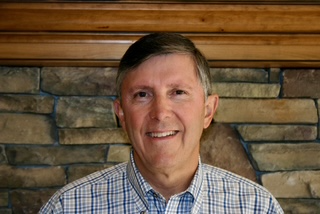Dance on TV: A boon to dance onstage?
Published 12:00 am Wednesday, December 9, 2015

- Adam Rose / Fox via Tribune News ServiceTop 4 contestant Gaby Diaz and top 10 contestant Eddie “Neptune” Eskridge perform during the season finale of “So You Think You Can Dance.” The show is is on its 12th season and is currently on a national tour of 53 U.S. cities.
Holding to the theory that a rising tide lifts all boats, there are some in the concert-dance world who believe TV shows like “So You Think You Can Dance” will enhance the appeal of dance onstage, often beset by small audiences, short runs and a lack of funds.
I wouldn’t hold my breath, though.
It’s not for any lack of talent or visibility. “SYTYCD,” a granny of U.S. dance reality-competitions, launched in 2005 and is now in the middle of a Season 12 national tour of 53 U.S. cities. This year’s 10 finalists, plus four other Season 12 dancers, perform in both new routines and favorites from the TV show. After the New Year, the tour resumes in Canada for an additional 17 cities. Like the televised “SYTYCD” this year, the tour is divided for the first time between Stage (ballet, jazz, contemporary) and Street (hip-hop, breaking) dancers.
Seventy one-night stands in three and a half months? The “SYTYCD” performers, age 18 to 30, are nothing if not hardworking. They’re also ambitious, even driven, as my conversations with Stage runner-up Hailee Payne and Street runner-up Virgil Gadson made abundantly clear. And, even with slipping ratings, “SYTYCD” remains hugely popular in comparison with dance onstage, generally reaching 3-4 million viewers per episode during Season 12.
But will such shows really be the shot in the arm that the dance world needs? People have been making that claim for decades, despite evidence to the contrary. A 2011 report by the National Endowment for the Arts projected slower than average growth (in comparison to the rest of the U.S. labor force) in dance employment through 2018: an increase of only 3-6 percent, less than for actors. The NEA also noted the escalating competition for dance jobs.
Fundamentally conservative, TV dance shows have generally followed, not created, dance trends. Britain’s 1949 televised ballroom competition, “Come Dancing,” reflected the popularity of the Hollywood musical, whose heyday began in the ’30s. Much later, in 2004, “Come Dancing” begat the U.K.’s “Strictly Come Dancing,” which begat U.S.-based “Dancing With the Stars” in 2005 — a franchise that, like “SYTYCD,” has conquered the televised world.
Live audiences — sometimes observing, sometimes dancing along — have historically marked these shows, often closely intertwined with pop music. One of the earliest in the U.S. was “American Bandstand,” first broadcast locally in 1952. Thanks to the magic of YouTube, today we can see shockingly rhythm-challenged, unglamorous teenagers in glasses and cardigans back in the day, eyes on the floor as they shuffle through semblances of swing dance.
Perhaps in the interest of “protecting” American youth, these early shows were sanitized bastions of the prejudices of their times, including racism. “American Bandstand” regularly hosted black musicians yet did its best to keep black teens off the dance floor; though host Dick Clark claimed he integrated the studio audience in 1957, African-Americans and whites weren’t allowed to dance with each other until 1964. Baltimore’s “Buddy Deane Show” (which inspired John Waters’ kitschy 1988 film “Hairspray”) never allowed black and white dancers in the studio at the same time. Though it ran two and a half hours a day six days a week from 1957 to 1964, blacks were on the show just one day per month, and never along with whites.
In an explicit response to the racism of ’50s and ’60s dance on TV, Don Cornelius started “Soul Train” in Chicago in 1970; syndicated in 1971, it ran through 2006. Its choreographed, primarily African-American dancers (who included Rosie Perez and Jody Watley) blew their amateur counterparts on “American Bandstand” out of the water; the Soul Train Line became an iconic feature of pop dance.
The late ’70s and the ’80s ended the battle to maintain viewers’ supposed innocence, earlier upheld through a ban on “suggestive” moves. Hip-thrusting disco dominated programs like “Dance Fever” (1979-1987), whose “rising tide” host can be seen on YouTube crowing that “the popularity of all kinds of dancing has skyrocketed in the last few years.” Meanwhile the barely clad, even more suggestive dancers of “Solid Gold” (1980-1988) brought the ’70s sexual revolution to the tube, for those who might have missed it in the first go-round.
Whether “SYTYCD” and its ilk are enhancing the concert-dance world is open to debate, but the interrelationship of dance on video and on the stage is undeniable, as is the versatility of the well-trained “SYTYCD” performers.






